Sympathetic nerve blocks for persistent pain in adults with inoperable abdominopelvic cancer
- PMID: 38842054
- PMCID: PMC11154857
- DOI: 10.1002/14651858.CD015229.pub2
Sympathetic nerve blocks for persistent pain in adults with inoperable abdominopelvic cancer
Abstract
Background: Persistent visceral pain is an unpleasant sensation coming from one or more organs within the body. Visceral pain is a common symptom in those with advanced cancer. Interventional procedures, such as neurolytic sympathetic nerve blocks, have been suggested as additional treatments that may play a part in optimising pain management for individuals with this condition.
Objectives: To evaluate the benefits and harms of neurolytic sympathetic nerve blocks for persistent visceral pain in adults with inoperable abdominopelvic cancer compared to standard care or placebo and comparing single blocks to combination blocks.
Search methods: We searched the following databases without language restrictions on 19 October 2022 and ran a top-up search on 31 October 2023: CENTRAL; MEDLINE via Ovid; Embase via Ovid; LILACS. We searched trial registers without language restrictions on 2 November 2022: ClinicalTrials.gov; WHO International Clinical Trials Registry Platform (ICTRP). We searched grey literature, checked reference lists of reviews and retrieved articles for additional studies, and performed citation searches on key articles. We also contacted experts in the field for unpublished and ongoing trials. Our trial protocol was preregistered in the Cochrane Database of Systematic Reviews on 21 October 2022.
Selection criteria: We searched for randomised controlled trials (RCTs) comparing any sympathetic nerve block targeting sites commonly used to treat abdominal pelvic pain from inoperable malignancies in adults to standard care or placebo.
Data collection and analysis: We independently selected trials based on predefined inclusion criteria, resolving any differences via adjudication with a third review author. We used a random-effects model as some heterogeneity was expected between the studies due to differences in the interventions being assessed and malignancy types included in the study population. We chose three primary outcomes and four secondary outcomes of interest. We sought consumer input to refine our review outcomes and assessed extracted data using Cochrane's risk of bias 2 tool (RoB 2). We assessed the certainty of evidence using the GRADE system.
Main results: We included 17 studies with 1025 participants in this review. Fifteen studies with a total of 951 participants contributed to the quantitative analysis. Single block versus standard care Primary outcomes No included studies reported our primary outcome, 'Proportion of participants reporting no worse than mild pain after treatment at 14 days'. The evidence is very uncertain about the effect of sympathetic nerve blocks on reducing pain to no worse than mild pain at 14 days when compared to standard care due to insufficient data (very low-certainty evidence). Sympathetic nerve blocks may provide small to 'little to no' improvement in quality of life (QOL) scores at 14 days after treatment when compared to standard care, but the evidence is very uncertain (standardised mean difference (SMD) -0.73, 95% confidence interval (CI) -1.70 to 0.25; I² = 87%; 4 studies, 150 participants; very low-certainty evidence). The evidence is very uncertain about the risk of serious adverse events as defined in our review as only one study contributed data to this outcome. Sympathetic nerve blocks may have an 'increased risk' to 'no additional risk' of harm compared with standard care (very low-certainty evidence). Secondary outcomes Sympathetic nerve blocks showed a small to 'little to no' effect on participant-reported pain scores at 14 days using a 0 to 10 visual analogue scale (VAS) for pain compared with standard care, but the evidence is very uncertain (mean difference (MD) -0.44, 95% CI -0.98 to 0.11; I² = 56%; 5 studies, 214 participants; very low-certainty evidence). There may be a 'moderate to large' to 'little to no' reduction in daily consumption of opioids postprocedure at 14 days with sympathetic nerve blocks compared with standard care, but the evidence is very uncertain (change in daily consumption of opioids at 14 days as oral milligrams morphine equivalent (MME): MD -41.63 mg, 95% CI -78.54 mg to -4.72 mg; I² = 90%; 4 studies, 130 participants; very low-certainty evidence). The evidence is very uncertain about the effect of sympathetic nerve blocks on participant satisfaction with procedure at 0 to 7 days and time to need for retreatment or treatment effect failure (or both) due to insufficient data. Combination block versus single block Primary outcomes There is no evidence about the effect of combination sympathetic nerve blocks compared with single sympathetic nerve blocks on the proportion of participants reporting no worse than mild pain after treatment at 14 days because no studies reported this outcome. There may be a small to 'little to no' effect on QOL score at 14 days after treatment, but the evidence is very uncertain (very low-certainty evidence). The evidence is very uncertain about the risk of serious adverse events with combination sympathetic nerve blocks compared with single sympathetic nerve blocks due to limited reporting in the included studies (very low-certainty evidence). Secondary outcomes The evidence is very uncertain about the effect of combination sympathetic nerve blocks compared with single sympathetic nerve blocks on participant-reported pain score and change in daily consumption of opioids postprocedure, at 14 days. There may be a small to 'little to no' effect, but the evidence is very uncertain (very low-certainty evidence). There is no evidence about the effect on participant satisfaction with procedure at 0 to 7 days and time to need for retreatment or treatment effect failure (or both) due to these outcomes not being measured by the studies. Risk of bias The risk of bias was predominately high for most outcomes in most studies due to significant concerns regarding adequate blinding. Very few studies were deemed as low risk across all domains for any outcome.
Authors' conclusions: There is limited evidence to support or refute the use of sympathetic nerve blocks for persistent abdominopelvic pain due to inoperable malignancy. We are very uncertain about the effect of combination sympathetic nerve blocks compared with single sympathetic nerve blocks. The certainty of the evidence is very low and these findings should be interpreted with caution.
Copyright © 2024 The Cochrane Collaboration. Published by John Wiley & Sons, Ltd.
Conflict of interest statement
SDN: none; SDN is a palliative medicine specialist and manages people with complex cancer pain.
SJN: worked for an institution that had received grant funding for research studies on hepatitis C. This included grants from AbbVie, who are a manufacturer of morphine and hydrocodone opioids that may form the comparator in the review. The grant fund was paid to the institution and the author had no access or direct control over the funds.
VJ: none; Vanessa Jordan is a methodology editor for Cochrane but has not been involved in the editorial process of this article.
JD: none; JD is a specialist pain physician and palliative medicine specialist and manages people with complex cancer‐related pain.
Figures
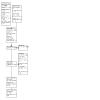

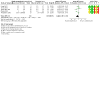


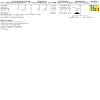
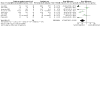


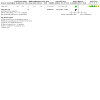





Update of
- doi: 10.1002/14651858.CD015229
Similar articles
-
Drugs for preventing postoperative nausea and vomiting in adults after general anaesthesia: a network meta-analysis.Cochrane Database Syst Rev. 2020 Oct 19;10(10):CD012859. doi: 10.1002/14651858.CD012859.pub2. Cochrane Database Syst Rev. 2020. PMID: 33075160 Free PMC article.
-
Treatment for women with postpartum iron deficiency anaemia.Cochrane Database Syst Rev. 2024 Dec 13;12(12):CD010861. doi: 10.1002/14651858.CD010861.pub3. Cochrane Database Syst Rev. 2024. PMID: 39670550
-
Conservative, physical and surgical interventions for managing faecal incontinence and constipation in adults with central neurological diseases.Cochrane Database Syst Rev. 2024 Oct 29;10(10):CD002115. doi: 10.1002/14651858.CD002115.pub6. Cochrane Database Syst Rev. 2024. PMID: 39470206
-
Topical antibiotics for chronic suppurative otitis media.Cochrane Database Syst Rev. 2025 Jun 9;6(6):CD013051. doi: 10.1002/14651858.CD013051.pub3. Cochrane Database Syst Rev. 2025. PMID: 40484407
-
Exercise therapy for chronic fatigue syndrome.Cochrane Database Syst Rev. 2024 Dec 19;12(12):CD003200. doi: 10.1002/14651858.CD003200.pub9. Cochrane Database Syst Rev. 2024. PMID: 39697147
References
References to studies included in this review
de Oliveira 2004 {published data only (unpublished sought but not used)}
-
- Oliveira R, dos Reis MP, Prado WA. The effects of early or late neurolytic sympathetic plexus block on the management of abdominal or pelvic cancer pain. Pain 2004;110(1‐2):400‐8. - PubMed
Di Maso 2012 {published data only}
-
- Di Maso M, Muscatiello N, Panella C. Efficacy of endoscopic ultrasound-guided neurolysis in pancreatic cancer. Digestive and Liver Disease 2012;44:S180‐1.
Dong 2021 {published data only (unpublished sought but not used)}
-
- Dong D, Zhao M, Zhang J, Huang M, Wang Y, Qi L, et al. Neurolytic splanchnic nerve block and pain relief, survival, and quality of life in unresectable pancreatic cancer: a randomized controlled trial. Anesthesiology 2021;135(4):686‐98. - PubMed
Gao 2014 {published data only (unpublished sought but not used)}
-
- Gao L, Yang YJ, Xu HY, Zhou J, Hong H, Wang YL, et al. A randomized clinical trial of nerve block to manage end-stage pancreatic cancerous pain. Tumour Biology 2014;35(3):2297‐301. - PubMed
Gupta 2020 {published data only (unpublished sought but not used)}
-
- CTRI/2019/03/018267. A study to compare the effect of ganglion impart block vs ganglion impar block with superior hypogastric plexus block for pain relief in patients of pelvic and perineal cancer [A randomized controlled trial of ganglion impar block vs superior hypogastric plexus block withganglion impar block for pain relief in patients of pelvic and perineal cancer]. https://trialsearch.who.int/Trial2.aspx?TrialID=CTRI/2019/03/018267 (first received 26 March 2019).
-
- Gupta A, Singh S, Raman R, Singh PR, Singh MK, Prabha R, et al. A randomized controlled trial of ganglion impar block vs ganglion impar block with superior hypogastric plexus block for pain relief in patients of pelvic and perineal cancer. Journal of Medical Science and Clinical Research 2020;08(03):598-604.
Huang 2014 {published data only (unpublished sought but not used)}
-
- Huang L, Tao F, Wang Z, Wan H, Qu P, Zheng H. Combined neurolytic block of celiac and superior hypogastric plexuses for incapacitating upper abdominal cancer pain. Journal of Balkan Union of Oncology 2014;19(3):826‐30. - PubMed
Johnson 2009 {published data only (unpublished sought but not used)}
-
- Johnson CD, Berry DP, Harris S, Pickering RM, Davis C, George S, et al. An open randomized comparison of clinical effectiveness of protocol-driven opioid analgesia, celiac plexus block or thoracoscopic splanchnicectomy for pain management in patients with pancreatic and other abdominal malignancies. Pancreatology 2009;9(6):755‐63. - PubMed
Kanno 2020 {published data only (unpublished sought but not used)}
-
- Kanno Y, Koshita S, Masu K, Ogawa T, Kusunose H, Murabayashi T, et al. Efficacy of EUS-guided celiac plexus neurolysis compared with medication alone for unresectable pancreatic cancer in the oxycodone/fentanyl era: a prospective randomized control study. Gastrointestinal endoscopy 2020;92(1):120‐30. - PubMed
Kawamata 1996 {published data only}
-
- Kawamata M, Ishitani K, Ishikawa K, Sasaki H, Ota K, Omote K, et al. Comparison between celiac plexus block and morphine treatment on quality of life in patients with pancreatic cancer pain. Pain 1996;64(3):597‐602. - PubMed
Lillemoe 1993 {published data only (unpublished sought but not used)}
-
- Staats PS, Hekmat H, Sauter P, Lillemoe K. The effects of alcohol celiac plexus block, pain and mood on longevity in patients with unresectable pancreatic cancer: A double-blind, randomized, placebo-controlled study. Pain Medicine 2001;2(1):28-34. - PubMed
Mercadante 1993 {published data only (unpublished sought but not used)}
-
- Mercadante S. Celiac plexus block versus analgesics in pancreatic cancer pain. PAIN 1993;52(2):187-92. - PubMed
Mishra 2013 {published data only (unpublished sought but not used)}
-
- Mishra S, Bhatnagar S, Rana SP, Khurana D, Thulkar S. Efficacy of the anterior ultrasound-guided superior hypogastric plexus neurolysis in pelvic cancer pain in advanced gynecological cancer patients. Pain Medicine (Malden, Mass.) 2013;14(6):837‐42. - PubMed
Polati 1998 {published data only (unpublished sought but not used)}
-
- Polati E, Finco G, Gottin L, Bassi C, Pederzoli P, Ischia S. Prospective randomized double-blind trial of neurolytic coeliac plexus block in patients with pancreatic cancer. British Journal of surgery 1998;85(2):199‐201. - PubMed
Wallace 2010 {published data only (unpublished sought but not used)}
-
- NCT00279292. Randomized trial of EUS neurolysis in pancreas cancer [Phase III randomized placebo controlled trial of EUS guided celiac plexus neurolysis for pancreatic cancer pain]. ClinicalTrials.gov/show/NCT00279292 (first received 17 January 2006).
-
- Wallace MB, Woodward TA, Hoffman BJ, Hawes RH, Das A, Nguyen CC, et al. A prospective double blind randomized controlled trial of EUS guided celiac neurolysis vs sham for pancreatic cancer pain. Gastrointestinal Endoscopy 2010;71(5):AB224.
Wong 2004 {published data only (unpublished sought but not used)}
-
- Wong GY, Schroeder DR, Carns PE, Wilson JL, Martin DP, Kinney MO, et al. Effect of neurolytic celiac plexus block on pain relief, quality of life, and survival in patients with unresectable pancreatic cancer: a randomized controlled trial. JAMA 2004;291(9):1092‐9. - PubMed
Wyse 2011 {published data only (unpublished sought but not used)}
-
- NCT00974948. Trial of endoscopic ultrasound (EUS) - guided celiac plexus neurolysis [A randomized, double blind, sham-controlled trial of EUS-guided celiac plexus neurolysis (EUS-CPN) for pain due to newly diagnosed, inoperable pancreatic cancer]. ClinicalTrials.gov/show/NCT00974948 (first received 10 September 2009).
-
- Wyse JM, Carone M, Paquin SC, Usatii M, Sahai AV. Randomized, double-blind, controlled trial of early endoscopic ultrasound-guided celiac plexus neurolysis to prevent pain progression in patients with newly diagnosed, painful, inoperable pancreatic cancer. Journal of Clinical Oncology 2011;29(26):3541-6. - PubMed
-
- Wyse JM, Carone M, Usatii M, Paquin SC, Sahai A. Results of the first, randomized, double blind, sham-controlled trial of EUS-guided celiac plexus neurolysis (EUSCPN) for pain due to newly diagnosed, inoperable pancreatic cancer. Gastrointestinal Endoscopy 2009;69(5):AB132.
Zhang 2008 {published data only (unpublished sought but not used)}
-
- Zhang CL, Zhang TJ, Guo YN, Yang LQ, He MW, Shi JZ, et al. Effect of neurolytic celiac plexus block guided by computerized tomography on pancreatic cancer pain. Digestive Diseases and Sciences 2008;53(3):856‐60. - PubMed
References to studies excluded from this review
Amr 2014 {published data only}
-
- Amr YM, Makharita MY. Neurolytic sympathectomy in the management of cancer pain-time effect: a prospective, randomized multicenter study. Journal of Pain and Symptom Management 2014;48(5):944‐56.e2. - PubMed
Bhatnagar 2008 {published data only}
-
- Bhatnagar S, Gupta D, Mishra S, Thulkar S, Chauhan H. Bedside ultrasound-guided celiac plexus neurolysis with bilateral paramedian needle entry technique can be an effective pain control technique in advanced upper abdominal cancer pain. Journal of Palliative Medicine 2008;11(9):1195-9. - PubMed
Due 1977 {published data only}
-
- Due J. Destruction of the celiac plexus with alcohol for the treatment of pain due to abdominal neoplasms. Nederlands Tijdschrift Voor Geneeskunde 1977;121(53):2124-5. - PubMed
Gress 2007 {published data only}
Gulia 2021 {published data only}
-
- Gulia A, Dhamija E, Kumar M, Thulkar SP, Bhatnagar S. Impact of early intervention in pain management in cancer patients: a randomized controlled study in a tertiary care cancer hospital. Clinical Journal of Pain 2021;37(4):259-64. - PubMed
Gunaratnam 2001 {published data only}
-
- Gunaratnam NT, Sarma AV, Norton ID, Wiersema MJ. A prospective study of EUS-guided celiac plexus neurolysis for pancreatic cancer pain. Gastrointestinal Endoscopy 2001;54(3):316-24. - PubMed
Jain 2005 {published data only}
-
- Jain PN, Shrikhande SV, Myatra SN, Sareen R. Neurolytic celiac plexus block: a better alternative to opioid treatment in upper abdominal malignancies: an Indian experience. Journal of Pain and Palliative Care Pharmacotherapy 2005;19(3):15-20. - PubMed
Kitoh 2005 {published data only}
-
- Kitoh T, Tanaka S, Ono K, Ohfusa Y, Ina H, Otagiri T. Combined neurolytic block of celiac, inferior mesenteric, and superior hypogastric plexuses for incapacitating abdominal and/or pelvic cancer pain. Journal of Anesthesia 2005;19(4):328-32. - PubMed
Kramer 2015 {published data only}
-
- Kramer SC, Meier R, Seifarth H. Ganglion block. Celiac plexus neurolysis. Radiologe 2015;55(6):458-61. - PubMed
Levy 2003 {published data only}
-
- Levy MJ, Wiersema MJ. EUS-guided celiac plexus neurolysis and celiac plexus block. Gastrointestinal Endoscopy 2003;57(7):923-30. - PubMed
NCT04801082 {published data only}
-
- NCT04801082. Endoscopic ultrasound guided coeliac plexus neurolysis for cancer pain [Endoscopic ultrasound-guided coeliac plexus neurolysis for cancer pain: chemical versus radiofrequency ablation]. clinicaltrials.gov/show/NCT04801082 (first received 8 March 2021).
Okuyama 2002 {published data only}
-
- Okuyama M, Shibata T, Morita T, Kitada M, Tukahara Y, Fukushima Y, et al. A comparison of intraoperative celiac plexus block with pharmacological therapy as a treatment for pain of unresectable pancreatic cancer. Journal of Hepato-Biliary-Pancreatic Surgery 2002;9(3):372-5. - PubMed
Plancarte 1990 {published data only}
-
- Plancarte R, Amescua C, Patt RB, Aldrete JA. Superior hypogastric plexus block for pelvic cancer pain. Anesthesiology 1990;73(2):236-9. - PubMed
Plancarte 1997 {published data only}
-
- Plancarte R, Leon-Casasola OA, El-Helaly M, Allende S, Lema MJ. Neurolytic superior hypogastric plexus block for chronic pelvic pain associated with cancer. Regional Anesthesia 1997;22(6):562-8. - PubMed
Rykowski 1996 {published data only}
-
- Rykowski JJ, Hilgier M, Herrman L. Unilateral injection with the patient in lateral position. Simpler pain blockade in pancreatic cancer. Lakartidningen 1996;93(21):2075-7. - PubMed
Sarhan 2011 {published data only}
-
- Sarhan TM, Fouad H. Male sexual dyfunction after unilateral and bilateral hypogastric plexus block for management of chronic cancer pelvic pain. European Journal of Pain Supplements 2011;5(1):84.
Seamans 2003 {published data only}
-
- Seamans DP, Wong GY, Wilson JL. Interventional pain therapy for intractable abdominal cancer pain. Journal of Clinical Oncology 2003;21(9 Suppl):92s-4s. - PubMed
Ventafridda 1990 {published data only}
-
- Ventafridda GV, Caraceni AT, Sbanotto AM, Barletta L, De Conno F. Pain treatment in cancer of the pancreas. European Journal of Surgical Oncology 1990;16(1):1-6. - PubMed
Zuurmond 2007 {published data only}
-
- Zuurmond WW, Perez RS, Loer SA. New aspects in performing interventional techniques for chronic pain. Current Opinion in Supportive and Palliative Care 2007;1(2):132-6. - PubMed
References to ongoing studies
CTRI/2022/11/046992 {published data only}
-
- CTRI/2022/11/046992. A clinical trial to compare the effects of single injection versus a combination of two injections in pain relief for patients with progressive cervical cancer. https://trialsearch.who.int/Trial2.aspx?TrialID=CTRI/2022/11/046992 2022. [ICTRP: CTRI/2022/11/046992]
NCT00968175 {published data only (unpublished sought but not used)}
-
- NCT00968175. Endoscopic ultrasound (EUS) guided-celiac plexus neurolysis (CPN) in unresectable pancreatic cancer [EUS guided-celiac plexus neurolysis (CPN) for patients with unresectable pancreatic cancer: a multi-center, randomized, single-blinded controlled trial]. ClinicalTrials.gov/show/NCT00968175 (first received 26 August 2009).
NCT05594459 {published data only}
-
- NCT05594459. Early treatment with invasive technique in cancer pain management [Early treatment with invasive technique in cancer pain management, impact on patient's quality of life. a randomized clinical trial]. ClinicalTrials.gov/show/NCT05594459 (first received 19 October 2022).
Additional references
Bhaskar 2020
-
- Bhaskar A. Interventional pain management in patients with cancer-related pain. Postgraduate Medicine 2020;132(Suppl 3):13-6. - PubMed
Bhatnagar 2015
Bosscher 2001
-
- Bosscher H. Blockade of the superior hypogastric plexus block for visceral pelvic pain. Pain Practice 2001;1(2):162-70. - PubMed
Butcher 2022
Can 2019
-
- Can G, Mushani T, Rajhi BH, Brant JM. The global burden of cancer pain. Cancer Pain 2019;35(3):315-21. - PubMed
Caraceni 1999
-
- Caraceni A, Portenoy RK. An international survey of cancer pain characteristics and syndromes. IASP Task Force on Cancer Pain. International Association for the Study of Pain. Pain 1999;82(3):263-74. - PubMed
Choi 2012
Christo 2008
-
- Christo PJ, Mazloomdoost D. Interventional pain treatments for cancer pain. Annals of the New York Academy of Sciences 2008;1138(1):299-328. - PubMed
Cleary 2015
-
- Cleary J, Gelband H, Wagner J. Cancer pain relief. In: Disease Control Priorities, Third Edition (Volume 3): Cancer. Washington (DC): The World Bank, 2015:165-73.
de Oliveira 2004
-
- Oliveira R, dos Reis MP, Prado WA. The effects of early or late neurolytic sympathetic plexus block on the management of abdominal or pelvic cancer pain. Pain 2004;110(1-2):400-8. - PubMed
Deeks 2021
-
- Deeks JJ, Higgins JP, Altman DG. Chapter 10: Analysing data and undertaking meta-analyses. In: Higgins JP, Thomas J, Chandler J, Cumpston M, Li T, Page MJ, et al, editor(s). Cochrane Handbook for Systematic Reviews of Interventions Version 6.2 (updated February 2021). Cochrane, 2021. Available from training.cochrane.org/handbook/archive/v6.2.
Farrar 2000
-
- Farrar J, Portenoy R, Berlin J, Kinman J, Strom B. Defining the clinically important difference in pain outcome measures. Pain 2000;88(3):287-94. - PubMed
Farrar 2001
-
- Farrar JT, Young JP Jr, LaMoreaux L, Werth JL, Poole MR. Clinical importance of changes in chronic pain intensity measured on an 11-point numerical pain rating scale. Pain 2001;94(2):149-58. - PubMed
Farrar 2003
-
- Farrar JT, Berlin JA, Strom BL. Clinically important changes in acute pain outcome measures: a validation study. Journal of Pain and Symptom Management 2003;25(5):406-11. - PubMed
Gebhart 2016
-
- Gebhart GF, Bielefeldt K. Physiology of visceral pain. Comprehensive Physiology 2016;6:1609-33. - PubMed
Global Burden of Disease Cancer Collaboration 2017
-
- Global Burden of Disease Cancer Collaboration. Global, regional, and national cancer incidence, mortality, years of life lost, years lived with disability, and disability-adjusted life-years for 32 cancer groups, 1990 to 2015: a systematic analysis for the global burden of disease study. JAMA Oncology 2017;3(4):524-48. - PMC - PubMed
Goudman 2020
GRADEpro GDT [Computer program]
-
- GRADEpro GDT. Hamilton (ON): McMaster University (developed by Evidence Prime), 2022. Available at gradepro.org.
Grundy 2019
-
- Grundy L, Erickson A, Brierley SM. Visceral pain. Annual Review of Physiology 2019;81(1):261-84. - PubMed
Harris 2009
Harris 2019
Higgins 2021
-
- Higgins JP, Savović J, Page MJ, Elbers RG, Sterne JA. Chapter 8: Assessing risk of bias in a randomized trial. In: Higgins JP, Thomas J, Chandler J, Cumpston M, Li T, Page MJ, et al, editor(s). Cochrane Handbook for Systematic Reviews of Interventions Version 6.2 (updated February 2021). Cochrane, 2021. Available from training.cochrane.org/handbook/archive/v6.2.
Kwon 2014
-
- Kwon JH. Overcoming barriers in cancer pain management. Journal of Clinical Oncology 2014;32(16):1727-33. - PubMed
McKenzie 2021
-
- McKenzie JE, Brennan SE. Chapter 12: Synthesizing and presenting findings using other methods. In: Higgins JP, Thomas J, Chandler J, Cumpston M, Li T, Page MJ, et al, editor(s). Cochrane Handbook for Systematic Reviews of Interventions Version 6.2 (updated February 2021). Cochrane, 2021. Available from training.cochrane.org/handbook/archive/v6.2.
Mercadante 2015
-
- Mercadante S, Klepstad P, Kurita GP, Sjøgren P, Giarratano A. Sympathetic blocks for visceral cancer pain management: a systematic review and EAPC recommendations. Critical Reviews in Oncology/Hematology 2015;96(3):577-83. - PubMed
Moher 2009
Moore 2013
-
- Moore RA, Straube S, Aldington D. Pain measures and cut-offs – 'no worse than mild pain' as a simple, universal outcome. Anaesthesia 2013;68(4):400-12. - PubMed
Nagels 2013
-
- Nagels W, Pease N, Bekkering G, Cools F, Dobbels P. Celiac plexus neurolysis for abdominal cancer pain: a systematic review. Pain Med 2013;14(8):1140-63. - PubMed
National Cancer Institute 2021
-
- National Cancer Institute. Common Terminology Criteria for Adverse Events (CTCAE). ctep.cancer.gov/protocolDevelopment/electronic_applications/ctc.htm accessed 16 April 2023.
Paley 2015
Pérez‐Moreno 2020
-
- Pérez-Moreno DP, Plancarte-Sánchez R, Hernández-Porras C, Guillén-Núñez Md. Effectiveness of the superior hypogastric plexus neurolytic block in the management of pelvic abdominal pain in adult patients diagnosed with cancer: a systematic literature review [Efectividad del bloqueo neurolítico del plexo hipogástrico superior en el manejo del dolor abdominopélvico en pacientes adultos con diagnóstico de cáncer. Revisión sistemática de la literatura]. Revista Chilena de Anestesia 2020;49(6):813-21.
Ranganathan 2021
Reid 2004
-
- Reid C, Davies A. The World Health Organization three-step analgesic ladder comes of age. Palliative Medicine 2004;18(3):175-6. - PubMed
Review Manager Web [Computer program]
-
- Review Manager Web (RevMan Web). Version 3.9.0. The Cochrane Collaboration, 2021. Available at revman.cochrane.org.
Ripamonti 2012
-
- Ripamonti CI, Santini D, Maranzano E, Berti M, Roila F. Management of cancer pain: ESMO clinical practice guidelines. Annals of Oncology 2012;23(Suppl 7):vii139-54. - PubMed
Rodriguez 2019
-
- Rodriguez C, Ji M, Wang H-L, Padhya T, McMillan SC. Cancer pain and quality of life. Journal of Hospice & Palliative Nursing 2019;21(2):116-23. - PubMed
Schünemann 2013
-
- Schünemann H, Brożek J, Guyatt G, Oxman A. Handbook for grading the quality of evidence and the strength of recommendations using the GRADE approach (updated October 2013). GRADE Working Group, 2013. Available from gdt.guidelinedevelopment.org/app/handbook/handbook.html.
Schünemann 2021a
-
- Schünemann HJ, Vist GE, Higgins JP, Santesso N, Deeks JJ, Glasziou P, et al. Chapter 15: Interpreting results and drawing conclusions. In: Higgins JP, Thomas J, Chandler J, Cumpston M, Li T, Page MJ, et al, editor(s). Cochrane Handbook for Systematic Reviews of Interventions Version 6.2 (updated February 2021). Cochrane, 2021. Available from training.cochrane.org/handbook/archive/v6.2.
Schünemann 2021b
-
- Schünemann HJ, Higgins JP, Vist GE, Glasziou P, Akl EA, Skoetz N, et al. Chapter 14: Completing 'Summary of findings' tables and grading the certainty of the evidence. In: Higgins JP, Thomas J, Chandler J, Cumpston M, Li T, Page MJ, et al, editor(s). Cochrane Handbook for Systematic Reviews of Interventions Version 6.2 (updated February 2021). Cochrane, 2021. Available from training.cochrane.org/handbook/archive/v6.2.
Scott‐Warren 2013
-
- Scott-Warren JT, Hill V, Rajasekaran A. Ganglion impar blockade: a review. Current Pain and Headache Reports 2013;17(1):306. - PubMed
Scott‐Warren 2015
-
- Scott-Warren JT, Bhaskar A. Cancer pain management: part II: interventional techniques. Continuing Education in Anaesthesia, Critical Care & Pain 2015;15(2):68-72.
Sharkey 2017
-
- Sharkey L, Loring B, Cowan M, Riley L, Krakauer EL. National palliative care capacities around the world: results from the World Health Organization Noncommunicable Disease Country Capacity Survey. Palliative Medicine 2017;32(1):106-13. - PubMed
Sikandar 2012
Sterne 2019
-
- Sterne JA, Savović J, Page MJ, Elbers RG, Blencowe NS, Boutron I, et al. RoB 2: a revised tool for assessing risk of bias in randomised trials. BMJ 2019;366:I4898. - PubMed
Tay 2009
-
- Tay W, Ho K-Y. The role of interventional therapies in cancer pain management. Annals of the Academy of Medicine, Singapore 2009;38(11):989-97. - PubMed
Tindale 2021
-
- Tindale A, Valli H, Butt H, Beattie CJ, Adasuriya G, Warraich M, et al. Different methods of providing automatic external defibrillators to out-of-hospital cardiac arrests to prevent sudden cardiac death. Cochrane Database of Systematic Reviews 2021, Issue 9. Art. No: CD014766. [DOI: 10.1002/14651858.CD014766] - DOI
Treillet 2018
van den Beuken‐van Everdingen 2016
-
- den Beuken-van Everdingen MH, Hochstenbach LM, Joosten EA, Tjan-Heijnen VC, Janssen DJ. Update on prevalence of pain in patients with cancer: systematic review and meta-analysis. Journal of Pain and Symptom Management 2016;51(6):1070-90.e9. - PubMed
Vargas‐Schaffer 2010
Wan 2014
WHO 1996
-
- World Health Organization. Part 2. Opioid availability. In: Cancer Pain Relief: with a Guide to Opioid Availability. 2nd edition. Geneva (Switzerland): World Health Organization, 1996:39-46.
WHO 2018
-
- Guidelines Review Committee. WHO guidelines for the pharmacological and radiotherapeutic management of cancer pain in adults and adolescents, 2018. www.who.int/publications/i/item/9789241550390 (accessed prior to 11 October 2022).
Wiffen 2017
Zhong 2014
-
- Zhong W, Yu Z, Zeng J, Lin Y, Yu T, Min X, et al. Celiac plexus block for treatment of pain associated with pancreatic cancer: a meta-analysis. Pain Practice 2014;14(1):43-51. - PubMed
References to other published versions of this review
Arcidiacono 2011
Publication types
MeSH terms
LinkOut - more resources
Full Text Sources
Miscellaneous

